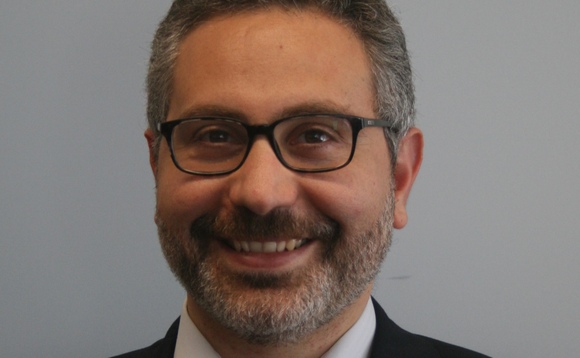While FX has always been a global market, it has been predominantly centered around New York, London and Tokyo. Now, Asia and in particular Singapore, is attracting market share of the FX trading volumes. We have already started seeing FX platforms establishing presence in the Asian markets, targeting Asian currency pairs. Together with this change in the market, were also seeing a change in the nature and behavior of FX participants, particularly in the way they are accessing FX liquidity in search for best prices from more FX destinations.
But, whats prompting this shift in the FX markets? What kinds of solutions are FX traders gravitating toward to accommodate this shift? And, what kind of role can technology play in providing connectivity for the inflow and outflow of FX trading from and into the US market?
Regional Markets are Changing Rapidly
Europes major economies have been undergoing massive and rapid changes, driven by multiple factors. From proposed market regulations like MiFID II, to political upheavals like the United Kingdoms Brexit vote to leave the European Union, the impact of recent economic events mean the landscape of these markets by the end of 2017 will look considerably different than they did at the beginning of 2016.

Were already seeing this take shape in London, which, despite remaining the FX capital of the world, has seen its total share of that market drop by 12 percent – or $2.41 trillion USD (2 trillion pounds) – over the past three years. As Reuters notes, much of this drop can be attributed to changes in banking regulations, and thats before Brexit is factored into the discussion (the 12 percent figure was discovered by a survey conducted pre-Brexit), which will only drive further volatility in the markets in the years ahead.
On the other hand, Asian markets have seen relatively higher economic activity, driven mainly by the growth in China. Such markets have so far seen less regulation and more competition for attracting flows from the Asian region and from around the world.
The U.S. is no different. For years, Dodd-Frank and the Volcker Rule imposed particular limitations on the actions of commercial banks and traders; with President-elect Donald Trumps vow to overturn Dodd-Frank, this could create an equally drastic overhaul for how U.S. traders function within both their regional market and in international markets.
So, it goes without saying, that the economic and political climates in the U.S. and E.U. are seeing massive changes, which, in turn, are impacting the overall FX volume distribution. This has serious ripple effects around the world. As regulatory regimes change, their intended or unintended impact across global markets will be felt, further impacting worldwide FX trading. And, when you compound these changes in the U.S. and E.U. with the ascendant role of Asian traders and markets, its clear that the worlds FX markets, and the regulations around them, are in a major state of flux right now. As the dust on these changes begins to settle, FX trading teams and infrastructures will likely reorient themselves to new locations in order to better leverage their market and regulatory environments for seeking liquidity.
Flexible Fintech is Remaking FX Infrastructure
With their economic, political, and regulatory environments quickly changing around them, FX traders are facing a heightened need to access an increasing number of FX venues across all regions. In addition, technology is enabling new trading and deployment models which traders need to access in order to stay in touch with where the action is. One major key to succeeding in this environment: flexible fintech and seamless connectivity.
Theres a growing trend of flexible fintech solutions, targeting both the institutional and retail sides of FX trading, thats accelerating the shift in how global FX traders view and access liquidity. These include new cloud-based deployment models and extranet reach models, which are breaking down old infrastructure siloes around FX markets, and enabling a better view of the market and a faster reach to liquidity. An ecosystem approach where FX participants build quick and cost-efficient pathways into their markets is becoming more and more in demand as the solution of the future.
For U.S.-based firms, this works in both directions. Not only does flexible infrastructure and connectivity open the door for U.S. traders to move outward into international markets, it also enables international traders with an easier means of finding liquidity in the U.S. Combined with the new flexible ideas brought on by Fintechs, the U.S., European and Asian traders can more readily access the liquidity they need to stay ahead of the changes occurring around them.
The Next Steps
The world is undoubtedly undergoing seismic economic, political, and regulatory changes, which will have profound consequences globally for many years to come. New regulations will spring up as older ones are killed off. In parallel, technology is increasingly becoming a more integral part of the FX markets, bringing new business ideas and requiring new infrastructure models to stay relevant in the market.
Traders will compete, firms will compete and markets overall will compete to obtain more of the worlds trading share. But, whether its a U.S. trader looking outward to international FX markets, or international traders looking to find liquidity in the U.S., the fact remains the same: staying afloat in this changing landscape, and capitalizing on inevitable business changes, is significantly contingent on a trader or firms ability to stay in tune with new ideas and having the flexible reach capability to be part of the action wherever it happens. The traders who can establish connections into FX markets faster, more efficiently and cost-effectively, will be the ones who will reap a greater return their investments. In a world where liquidity access is quickly changing, flexible fintech is what will open the door, for both U.S. and international FX traders, to really get to where the action is.
Ralph Achkar is Director of Strategic Alliances, Capital Markets,Colt Technology Services



